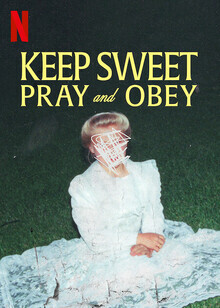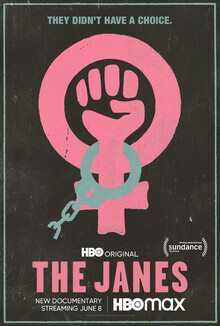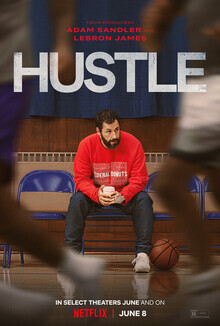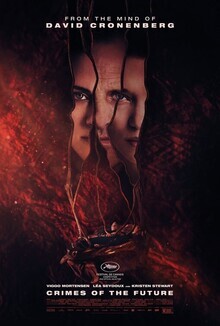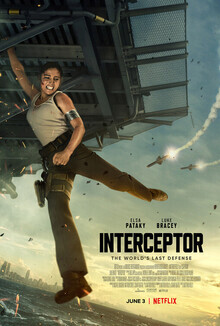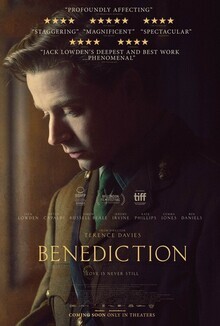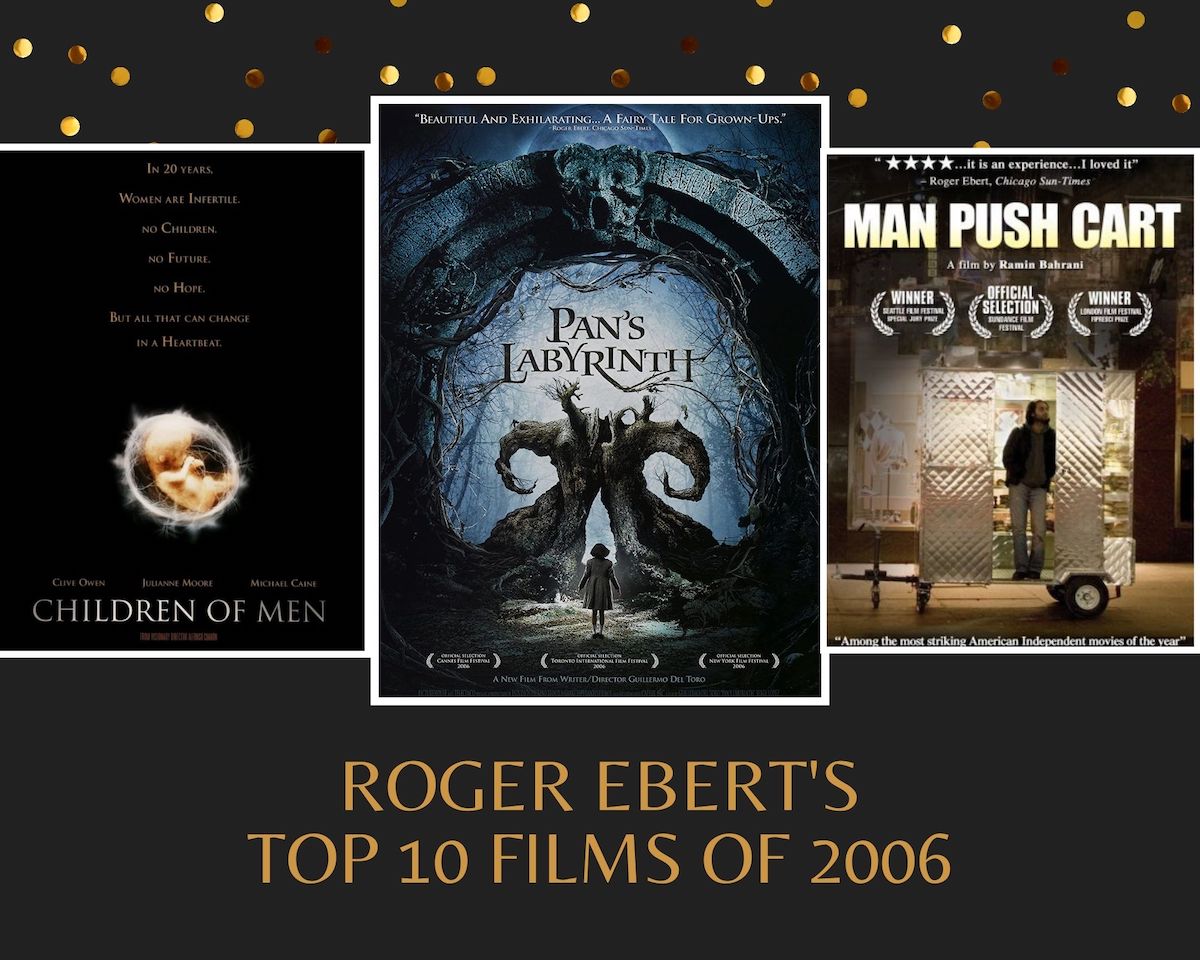
To commemorate the ninth anniversary of Roger Ebert's passing this month, we are publishing some of his invaluable lists ranking the Top Ten films from particular years over the past half-century. Click on the title of each film, and you will be directed to the full review...
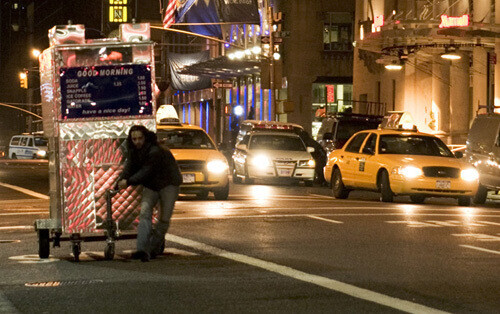
In a film like this, it is pointless to describe "screenplay," "acting," or "direction." The film is resolutely utilitarian. No effort is made to create a visual look; the camera simply, impassively, regards. Razui's acting never strains for effect; it embodies the bleakness and exhaustion of his character. Bahrani, as director, not only stays out of the way of the simplicity of his story, but relies on it; less is more, and with restraint he finds a grimy eloquence. Bahrani was inspired by "The Myth of Sisyphus," by Albert Camus, the story of a man who spends his life pushing a rock up a hill, only to see it roll down again, and only push it back up again. Well, what else can he do? "Man Push Cart" is not an indictment of the American economy or some kind of political allegory. It is about what it is about. I think the message may be that it is better, after all, to push the cart than to face a life without purpose at the bottom of the hill.
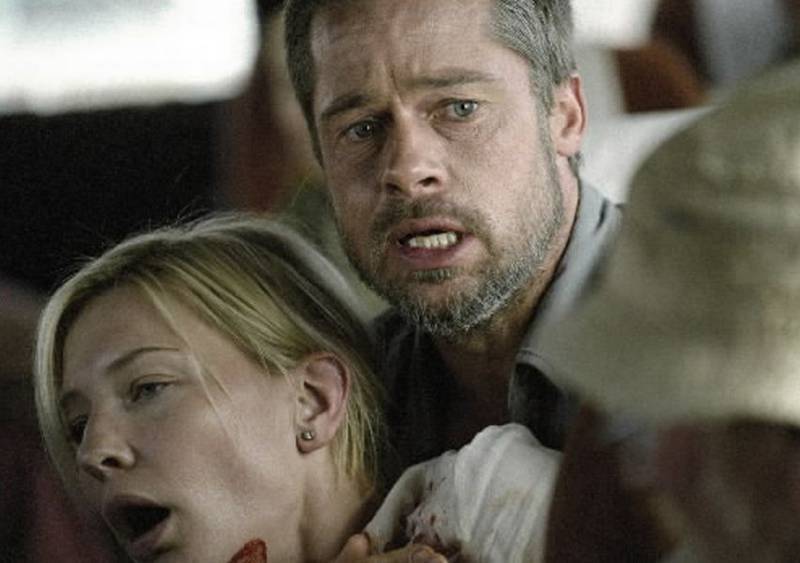
Technically, “Babel” may seem to be an example of the Idiot Plot, in which at many points one word or sentence could clear everything up. But these characters are not idiots, and desperately want to utter that word or sentence, but are prevented because of (a) the language barrier, (b) their cultural assumptions, (c) the inability of others to comprehend what they are actually saying, and (d) how in that case everyone falls into an established script made of prejudice and misunderstanding. Inarritu films more in sorrow than anger, and spares most of his characters tragic retribution because he loves and understands them too much to simply grind them in a plot. This is a film about people who do what we might do — if we were them. We are not, but then it is useful to reflect that they are not us, either.
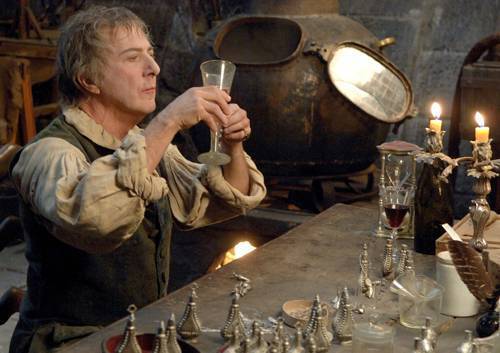
Dustin Hoffman produces a quirky old master whose life is also governed by perfume, if more positively. Hoffman reminds us here again, as in "Stranger Than Fiction," what a detailed and fascinating character actor he is, able to bring to the story of Grenouille precisely what humor and humanity it needs, and then tactfully leaving it at that. Even his exit is nicely timed. Why I love this story, I do not know. Why I have read the book twice and given away a dozen copies of the audiobook, I cannot explain. There is nothing fun about the story, except the way it ventures so fearlessly down one limited, terrifying, seductive dead end, and finds there a solution both sublime and horrifying. It took imagination to tell it, courage to film it, thought to act it, and from the audience it requires a brave curiosity about the peculiarity of obsession.
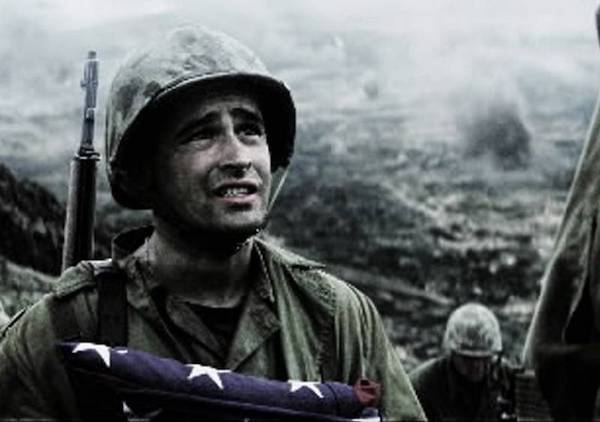
Those who were hailed as the Iwo Jima heroes were indeed heroes (the battle resulted in 29 Medals of Honor), but in the film they tend to be unresponsive to such praise; they cannot forget the dead friends left behind. The intensity of the battle can scarcely be imagined. The Marines suffered one-third of all their World Two combat deaths on the tiny speck in the Pacific, and almost all the 22,000 entrenched Japanese died, some by their own hands. Eastwood’s ambitious and enormously effective film has three aims: To recreate the hell of the Battle of Iwo Jima, to explore the truth and meaning of the famous photograph of the flag being raised over the island, and to record the aftermath in the lives of the survivors. He joined it with another film, “Letters from Iwo Jima,” about the Japanese experience; a garrison of defenders tunneled into the rock of the island to create fortified positions. It was clear to them that without air or sea support they would be defeated; their mission was to hold out as long as they could, and die.
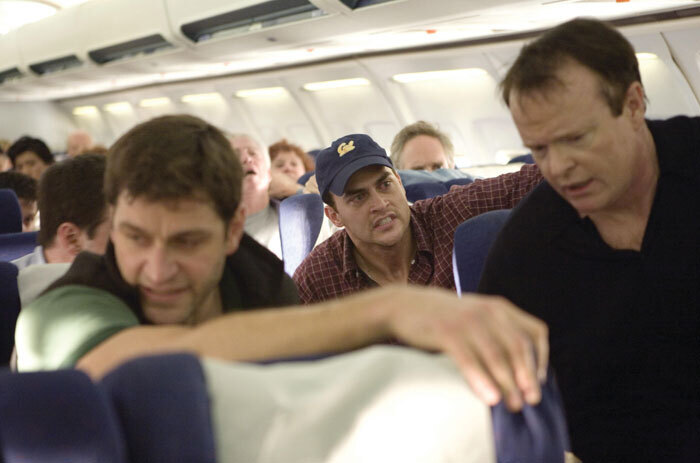
To watch "United 93" is to be confronted with the grim chaotic reality of that September day in 2001.The movie is deeply disturbing, and some people may have to leave the theater. But it would have been much more disturbing if Greengrass had made it in a conventional way. He does not exploit, he draws no conclusions, he points no fingers, he avoids "human interest" and "personal dramas" and just simply watches. The movie's point of view reminds me of the angels in "Wings of Desire." They see what people do and they are saddened, but they cannot intervene.
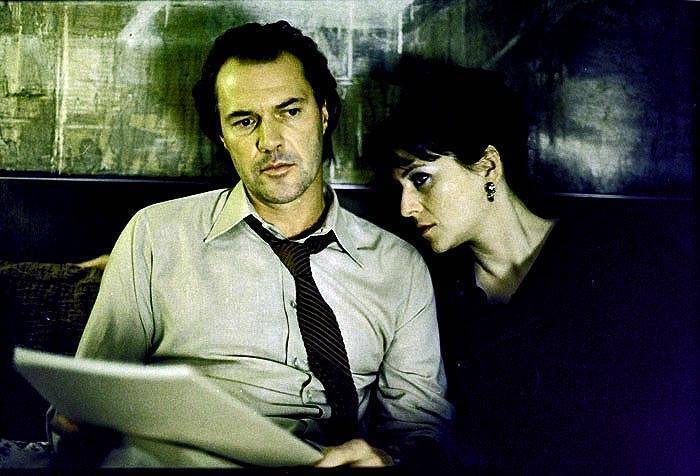
The movie is relevant today, as our government ignores habeas corpus, practices secret torture, and asks for the right to wiretap and eavesdrop on its citizens. Such tactics did not save East Germany; they destroyed it, by making it a country its most loyal citizens could no longer believe in. Driven by the specter of aggression from without, it countered it with aggression from within, as sort of an anti-toxin. Fearing that its citizens were disloyal, it inspired them to be. True, its enemies were real. But the West never dropped the bomb, and East Germany and the other Soviet republics imploded after essentially bombing themselves. "The Lives of Others" is a powerful but quiet film, constructed of hidden thoughts and secret desires. It begins with Wiesler teaching a class in the theory and practice of interrogation; one chilling detail is that suspects are forced to sit on their hands, so that the chair cushion can be saved for possible use by bloodhounds. It shows how the Wall finally fell, not with a bang, but because of whispers.
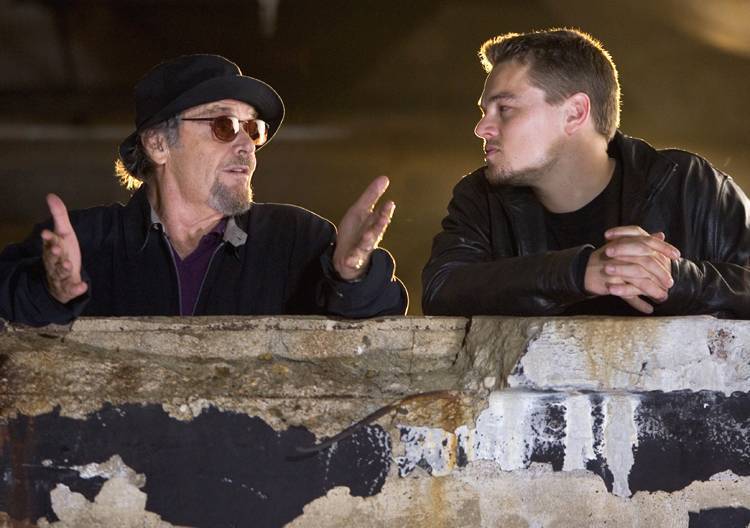
It is intriguing to wonder what Scorsese saw in the Hong Kong movie that inspired him to make the second remake of his career (after "Cape Fear"). I think he instantly recognized that this story, at a buried level, brought two sides of his art and psyche into equal focus. We know that he, too, was fascinated by gangsters. In making so many films about them, about what he saw and knew growing up in Little Italy, about his insights into their natures, he became, in a way, an informant. I have often thought that many of Scorsese's critics and admirers do not realize how deeply the Catholic Church of pre-Vatican II could burrow into the subconscious, or in how many ways Scorsese is a Catholic director. This movie is like an examination of conscience, when you stay up all night trying to figure out a way to tell the priest: I know I done wrong, but, oh, Father, what else was I gonna do?
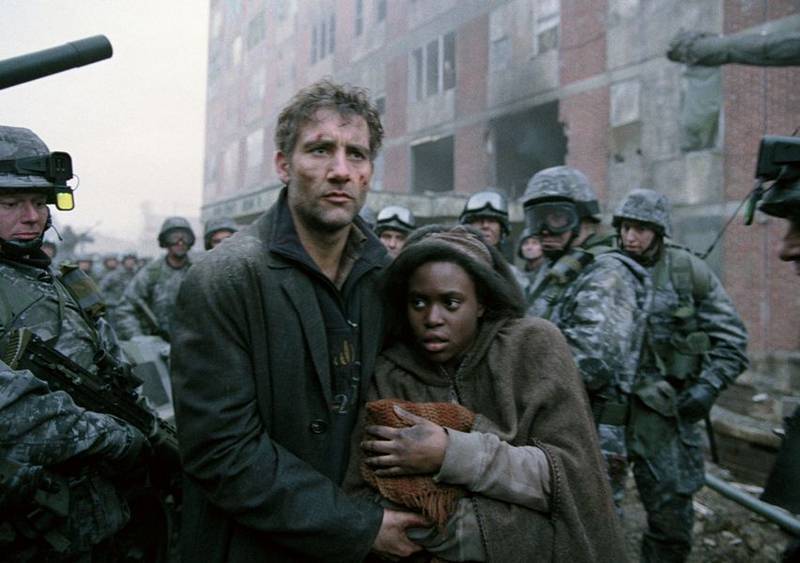
Watching "Children of Men," which creates a London in ruins, I realized after a point that the sets and art design were so well done that I took it as a real place. Often I fear it will all come to this, that the rule of law and the rights of men will be destroyed by sectarian mischief and nationalistic recklessness. Are we living in the last good times? There is much to be said about the story of "Children of Men," directed by Alfonso Cuaron and based on a lesser-known novel by P.D. James, who usually writes about a detective. But the story, like the stories of "Metropolis," "Nosferatu" or "Escape from New York," is secondary to the visual world we are given to regard. Guerrilla fighters occupy abandoned warehouses. The homeless live in hovels. Immigrants are rounded up and penned in cages. The utilities cannot be depended upon. There are, most disturbing of all, no children. Only dogs and cats remain to be cared for and cherished.
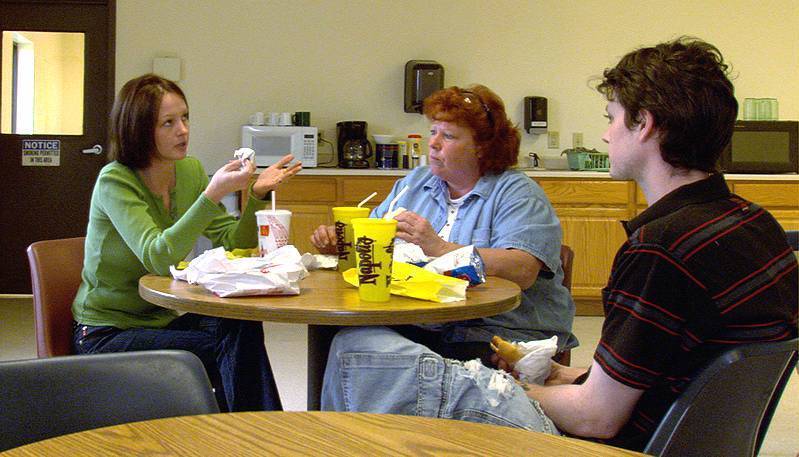
Steven Soderbergh's "Bubble" approaches with awe and caution the rhythms of ordinary life itself. He tells the stories of three Ohio factory workers who have been cornered by life. They work two low-paying jobs, they dream of getting a few bucks ahead, they eat fast food without noticing it, two of them live with their parents, one of them has a car. Their speech is such a monotone of commonplaces that we have to guess about how they really feel, and sometimes, we suspect, so do they. I haven't made the movie sound enthralling. But it is. The characters are so closely observed and played with such exacting accuracy and conviction that "Bubble" becomes quietly, inexorably, hypnotic. Soderbergh never underlines, never points, never uses music to suggest emotion, never shows the characters thinking ahead, watches appalled as small shifts in orderly lives lead to a murder.
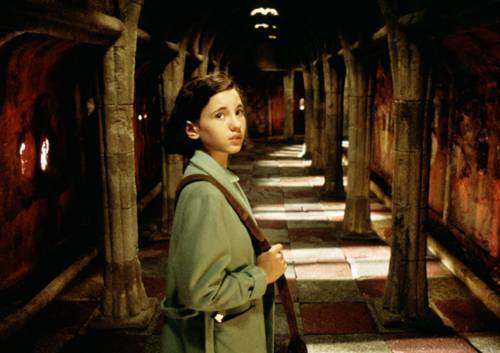
Guillermo del Toro's "Pan's Labyrinth" is one of the cinema's great fantasies, rich with darkness and wonder. It's a fairy tale of such potency and awesome beauty that it reconnects the adult imagination to the primal thrill and horror of the stories that held us spellbound as children. If you recall the chills that ran down your spine and the surreal humor that tickled your brain in the presence of "Alice in Wonderland," "Little Red Riding Hood" or "The Wizard of Oz" when you were a child (or, later, in the nightmarish dream-films of Luis Bunuel, Jean Cocteau, F.W. Murnau or David Cronenberg), you'll discover those sensations once again, buried deep in the heart of "Pan's Labyrinth."
